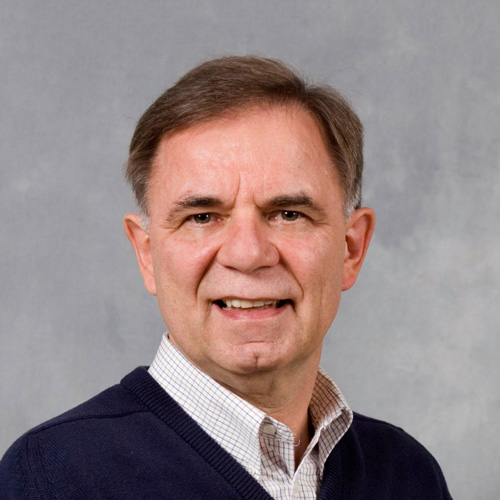Positions
Roswell Park Comprehensive Cancer Center
Roswell Park Graduate Division, University at Buffalo
- Professor Emeritus, Cellular & Molecular Biology Program
Research Overview
Description of Research
Maintenance of chromosome integrity requires proper regulation and execution of replication and DNA damage repair. When replication fork movement is blocked by DNA damage, checkpoint pathways are activated to temporarily arrest S-phase progression and facilitate DNA repair. Blocks to replication forks can also be bypassed by error-free and error-prone mechanisms. Defects in these processes can cause mutations and lead to chromosome instability, a hallmark of cancer.
We are investigating chromosome replication and its coordination with DNA damage repair and bypass, testing the influence of gene mutations as well as the impact of anticancer drugs that damage DNA. Of current interest is the identification of genes and pathways that mediate sensitivity to DNA damaging drugs, and their functions. DNA damage response genes are required to maintain chromosome integrity, and a number of these genes are known to be mutated in cancer predisposition syndromes.
Research Progress
Rad5, a PCNA polyubiquitin ligase and DNA-dependent ATPase in yeast, is orthologous to putative tumor suppressors and controls error-free bypass of DNA damage by an unknown mechanism. We investigated the roles of Rad5 and analyzed the DNA structures that form during damage bypass at replication forks stalled by DNA adducts with the alkylating antitumor-agent, adozelesin. Rad5 mediated the formation of recombination-dependent, X-shaped DNA structures containing Holliday junctions between sister chromatids. Mutants lacking the damage induced chromatid junctions were defective in resolving stalled forks, restarting replication and completing chromosome duplication. Rad5 polyubiquitin ligase and ATPase domains both contributed to replication fork recombination. Our results indicate that multiple activities of Rad5 function coordinately with homologous recombination factors to enable replication template switch events that join sister chromatids at stalled forks in order to bypass DNA damage.
We have screened the collection ofyeast deletion strains to identify novel genes that mediate cellular resistance to the DNA damaging drug, cisplatin. Twenty of the genes identified had not been previously linked to cisplatin resistance and belong to distinct functional groups, including nucleotide metabolism, mRNA catabolism, RNA pol II-dependent gene regulation and vacuolar transport. Some deletion strains were cross-resistant to particular cytotoxic agents but sensitive to others. The sensitivity of certain resistant strains to other cytotoxic agents may point to particular drug combinations that can overcome resistance caused by inactivation of genes identified in the screen.
Two of the genes found in the screen described above affect nucleotide metabolism: the FCY2 gene, encoding a purine-cytosine permease, and the HPT1 gene, encoding the hypoxanthine guanine phosphoribosyl transferase. Inactivation of either gene enhanced cisplatin resistance in yeast cells. In addition to these mutants in the salvage pathway of purine nucleotide biosynthesis, mutants in the de novo pathway also enhanced cisplatin resistance. We found that dysregulation of the purine nucleotide biosynthesis pathways or the addition of exogenous purines can modulate cisplatin cytotoxicity. These findings in yeast cells provide a novel direction for mechanistic studies on cisplatin resistance in human cells.
We found that silent replication origins temporarily stall replication fork progression through a chromosome in the absence of DNA damage. Some silent origins are competent for replication initiation and can be activated by deletion of adjacent early-firing origins. These silent origins are programmed to activate late in S phase and are normally replicated passively by adjacent early origins. Certain silent origins function in transcriptional silencing through binding ORC, the origin recognition complex required for replication initiation. Origin silencing is mediated by novel cis-acting elements that confer a late replication timing program and by SIR proteins that interact with ORC. One of the SIRs, Sir2, is a protein deacetylase with human homologs involved in cell lifespan determination and p53 regulation.
Earlier we discovered a novel cis-acting component, called a DNA unwinding element (DUE), in replication origins from several organisms. The low DNA helical stability of DUEs can be predicted from the DNA sequence using computer programs that we have developed. DUEs also function in other processes including the regulation of transcription. New programs that perform a combined analysis of specific DNA sequences and helical stability localized a DUE in the transcription regulatory of the human c-MYC proto-oncogene. The predicted region of minimal helical stability in the c-MYC gene overlapped a known site for a single-strand-specific DNA binding protein and an unwound DNA region identified in cells expressing c-MYC. The programs can be accessed freely through a Web server at: www.gsa.buffalo.edu/dna/dk
Publications
- Minca EC, Kowalski D. Multiple Rad5 activities mediate sister chromatid recombination to bypass DNA damage at stalled replication forks. Molecular cell 2010; 38(5):649-661
- Minca EC, Kowalski D. Replication fork stalling by bulky DNA damage: localization at active origins and checkpoint modulation. Nucleic acids research 2011; 39(7):2610-2623
- Kowalski D, Pendyala L, Daignan-Fornier B, Howell SB, Huang RY. Dysregulation of purine nucleotide biosynthesis pathways modulates cisplatin cytotoxicity in Saccharomyces cerevisiae. Molecular pharmacology 2008;74(4):1092-1100
- Huang RY, Kowalski D, Minderman H, Gandhi N, Johnson ES. Small ubiquitin-related modifier pathway is a major determinant of doxorubicin cytotoxicity in Saccharomyces cerevisiae. Cancer research 2007; 67(2):765-772
- Huang R-Y, Kowalski D, Minderman H, Gandhi N, Johnson ES. SUMO pathway is a major determinant of doxorubicin cytotoxicity in yeast. Proceedings of the American Association for Cancer Research Annual Meeting 2007; 48:171
- Odunsi K, Kowalski D, Mhawech-Fauceglia P, Andrews C, Lele S, Huang RY. Inhibition of Serine-Arginine Protein Kinase 1 (SRPK1) Overcomes Platinum Resistance in Ovarian Cancer. Reproductive sciences (Thousand Oaks, Calif.) 2009; 16(3 Suppl.):283
